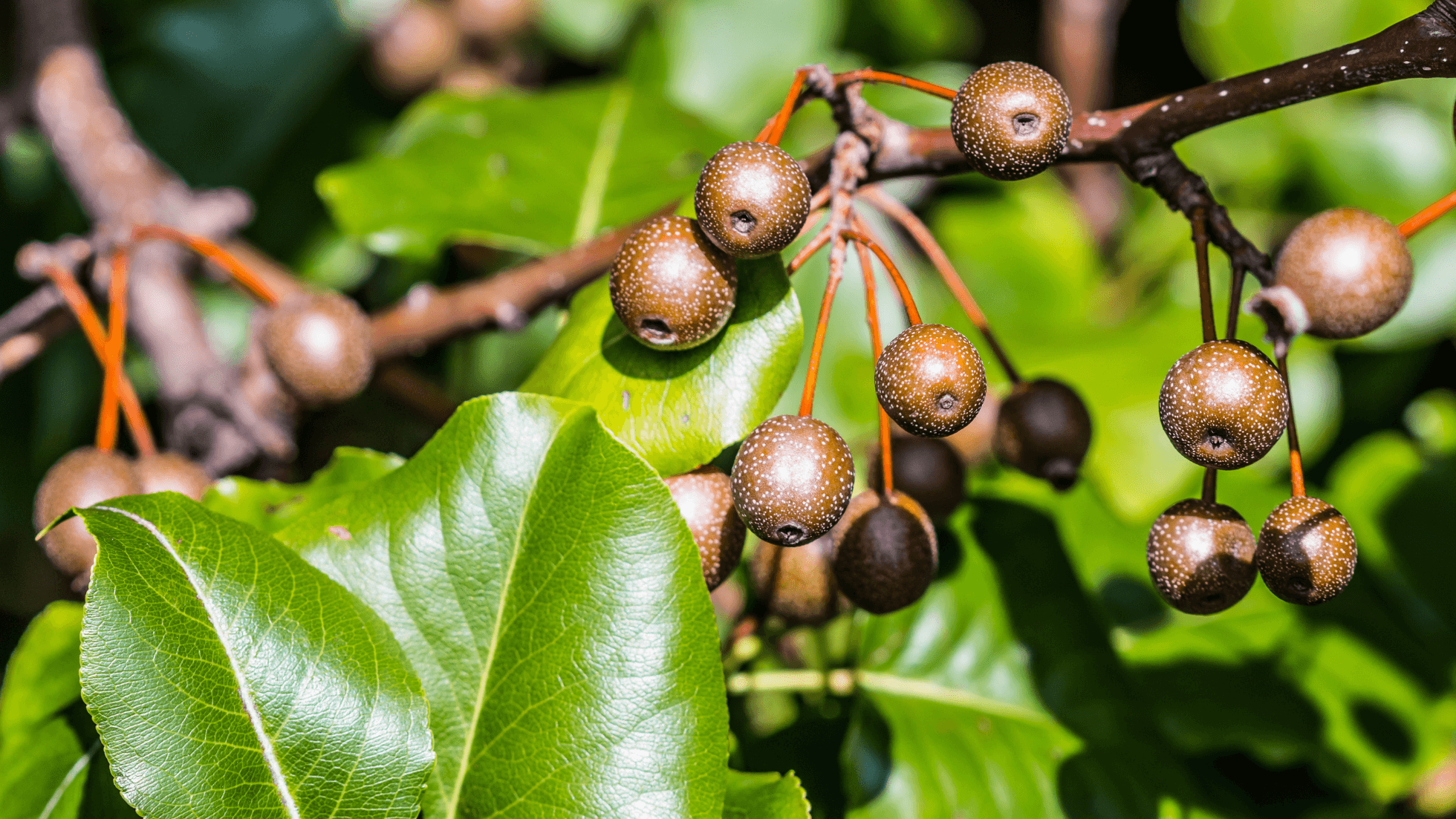Callery Pear Tree Invasive Species
Callery pear trees (Pyrus calleryana), native to China and Vietnam, have been popular ornamental trees for almost 200 years. These trees were introduced to the United States in the 1800s and are often planted along streets and sidewalks because of their attractive form and coloration. This species is also known for its disease resistance (particularly fire blight resistance.) However, Callery pear tree is an invasive species, so much so that nurseries will no longer be allowed to sell the plant in Pennsylvania in 2024.
Callery Pear Tree Appearance
Callery pear has a distinctive appearance with crucial aspects that can help homeowners and plant health care experts quickly identify the plant.
- Size: Callery Pear trees typically grow to around 16 to 26 ft tall, or approximately 5 to 8 meters, often with a conical to rounded crown.
- Leaves: The leaves are oval-shaped and about 1-1⁄2 to 3 inches long, with a dark green color in early spring before the leaves turn yellow, orange, or red in the fall.
- Flowers: The flowers are white and grow in clusters, have about five petals, and are about 3⁄4 to 1 inch in diameter.
- Fruits: The fruits of the Callery pear are small, less than 3⁄8 of an inch in diameter. In addition, the fruits have a rugged, almost woody feel but are softened by frost, after which birds readily consume them.
Damage Caused by Callery Pear

Callery pear trees are invasive plants in many parts of the country and have damaged the landscapes and gardens of Pennsylvania homeowners. One of the significant reasons Callery pears cause so much damage is how the trees grow. These trees form dense thickets which displace native plants and animals. The dense thickets push out native trees or other plants that may compete with the Callery pear for water, soil, and space.
In addition, some cultivars (a type of cultivated plant that people have selected for desired traits), such as the ‘Bradford pear,’ are susceptible to storm damage, becoming disfigured or killed by strong winds and winter weather. So there is also a risk of the branches falling during strong winds and storms and damaging other things around the tree, like property or people.
What Makes Callery Pear an Invasive Plant
Like other species of plants we have discussed in this series, Callery pear has many qualities that enable the tree to spread quickly. One primary reason is the fruits discussed previously. The tree species produce large quantities of fruits that birds consume, and then those birds fly and relocate to new areas, passing the seeds in droppings into the soil, allowing new Callery pear trees to grow.
What makes Callery pear unique among the other invasive plant species we have talked about is the role of cultivars in spreading its population. Cultivars were initially bred to produce sterile fruit. However, different varieties can cross-pollinate, which results in viable seeds. When these cultivars grow close enough to each other to cross-pollinate, the trees produce fertile seeds that can sprout once dispersed.
Treating & Controlling Callery Pear
Callery pear can be challenging to control, but some methods exist for managing or removing the population from a landscape.
- Small plants and their roots can be removed by hand, but larger trees require more extensive removal with specialized equipment, and herbicide application must be used as a follow-up.
- Foliar herbicide applications can be done from around mid-May to early-mid October. These foliar treatments are ideal for landscapes with a low to moderate density of trees, which are less than 10 feet tall.
- Basal bark treatments can be applied to the stems of a Callery pear tree throughout the year, with some exceptions (particularly during snow or rainy weather.)
As always, these control and treatment options require specialized, extensive knowledge of plant health care techniques. So call a plant health care expert if you need help with Callery pear in your landscape.
Contact Burkholder PHC for Expert Treatment of Plant Health Care Issues
The Callery pear tree invasive plant can overtake landscapes, and its dense thickets prevent native plant species from growing. To keep your landscape and native species healthy and able to thrive, we recommend a professional evaluation to help remove the plant and control any adverse effects. Our evaluation is free, and the proper treatments can help improve the health of your landscape. Contact Burkholder PHC today for a free consultation.

